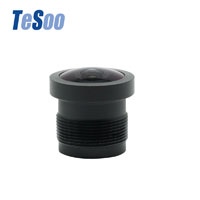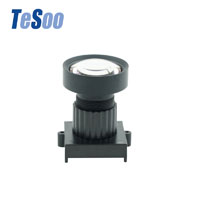What Is A Fisheye Lens?
A fisheye lens is a type of wide-angle lens that has a very strong perspective and can distort straight lines into curves.
As its name suggests, it is based on the perspective of a fish, it will be an ultra-wide hemispheric view of everything in front of it. The so-called "ultra-wide hemispheric view" is the wide fisheye lens, which has a 180 ° field of view (which is half of a sphere 360 °, hence the term hemisphere).
In 1906, the American physicist, inventor Robert W. Wood (Robert W. Wood) first used the term "fisheye" to describe this photographic lens.
Fisheye lens features
Focal length: In photography lenses, such as cameras, cell phone lenses, etc., the description of the lens focal length is usually used when the equivalent focal length (equivalent focal length) to describe the focal length of 16mm or less to meet the requirements of the fisheye lens. For car, monitoring, and other applications, more often use the concept of effective focal length EFL (Effective Focal Length), so also as a fisheye camera lens, car and other areas of the small interface (S mount/M12 mount) fisheye lens focal length is generally between 0.4mm ~ 1.8mm.
Image distortion: the main feature of the fisheye lens is distortion, fisheye lens is presented as a "barrel distortion", in which the object in the center of the picture seems to protrude outward, the lines are curved.
Fisheye lens classification.
180º fisheye lens, 185º fisheye lens, 190º fisheye lens, 200º fisheye lens, 205º fisheye lens, 210º fisheye lens, 220º fisheye lens, 230° fisheye lens, 235º fisheye lens, 240º fisheye lens, 260º fisheye lens, 360º fisheye lens. A wide range of target sizes can be matched, according to the project requirements of different size chips: 1/4" fisheye lens, 1/3.6" fisheye lens, 1/3" fisheye lens, 1/2.5" fisheye lens, 1/2" fisheye lens, 1/1.8" fisheye lens, 2/3" fisheye lens. Matching different interface methods: M12 fisheye lens, M10 fisheye lens, M8 fisheye lens, M7 fisheye lens, M6 fisheye lens, C interface, and CS interface fisheye lens.
Fisheye lens aberration correction
Fisheye lens relies on the artificial introduction of a large number of barrel distortion to obtain a large viewing angle so that you can get a large field of view of the image information, so the image in addition to the center of the screen at the object shape remains unchanged, the other parts of what should straight have a certain amount of distortion, which causes many restrictions on its application. For example, in the field of security, a fisheye lens can replace a number of ordinary lenses, a wide range of surveillance, due to the perspective of up to 180 degrees, so there are almost no monitoring dead ends, even if only one lens is almost no way to move or destroy the lens without being detected, however, due to the distortion of the image so that objects are difficult to identify with the human eye so that the ability to monitor greatly reduced; another example is in the field of robotics, automated robots requires to be able to collect the image information of the surrounding scenery and identify it to take the corresponding action, if the fisheye lens is used it can increase the collection efficiency by 2-4 times, but due to the introduction of aberration makes it difficult to apply the usual recognition software. So we need some way to recognize the image obtained by the fisheye lens.
Fisheye lens application
A fisheye lens is widely used, car fisheye lens, binocular stitching wide angle camera lens, security monitoring wide-angle lens, smart home wide-angle lens, etc. Among them, the car fisheye lens is mainly used in 360 panoramic surround view (AVM, around view monitor), AVM is one of the first deployed in mass production vehicles visual image and perception system, mainly for the driver to provide parking, low-speed driving vehicle perimeter environment perception image, AVM (Around View Monitor) system principle is through multiple ( The principle of AVM (Around View Monitor) system is to obtain real-time images around the vehicle through multiple (four) wide-angle cameras, and then stitch and synthesize them into 360-degree surround-view images by software 2D and 3D distortion correction, and display them on the multimedia screen in the car. With the help of this, the driver can drive and park safely and easily in complex situations. This technology is used in many vehicles for panoramic auto-parking and self-driving functions.
The relationship between the fisheye lens and the chip
Recommended matching chip solutions: AR0330, AR0140, AR0234, IMX291, IMX290, IMX335, OV4689, OV2710, OV2718, OV2311.
Popular Camera Lens
Hot Camera Lens Articles

 English
English 
